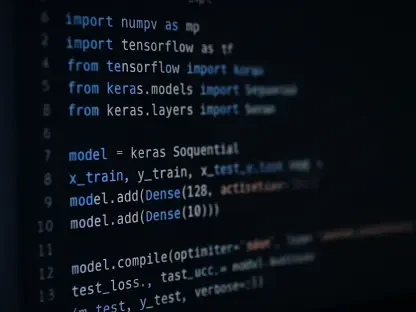In an era when artificial intelligence is increasingly integrated into everyday applications, memory management in large language models (LLMs) emerges as a critical factor shaping efficiency and reliability. The traditional AI approach primarily focused on increasing memory capacity rather than refining the mechanisms through which these systems remember and forget information. Developers now face an intricate challenge: optimizing memory management to ensure AI functionality that mirrors human-like relevance filtering without inducing memory overload or lapse.
Core Insights on Memory Management Principles
Effective memory management within AI incorporates a blend of statelessness, contextual retention, and strategic forgetting. Statelessness involves each interaction being independent, posing challenges when it comes to maintaining coherence across sessions. Contextual retention addresses this issue by strategically storing pertinent context, aiding the model’s understanding of sequential interactions. Meanwhile, strategic forgetting allows AI to discard irrelevant or outdated information, akin to human memory processes, thereby avoiding memory congestion with unnecessary data.
AI models such as ChatGPT operate independently unless provided with explicit context from external sources, often resulting in erratic memory behavior. These inconsistencies underscore the need for intentional scaffolding, whereby past interactions are reassembled through techniques like invisible prompts and reconstructed context histories. Such structure proves indispensable in bridging disparate sessions, emphasizing the importance of thoughtful memory designs over expansive capacities.
Advancements in Memory Management Features
Contextual Working Memory
A pivotal feature of modern memory management technology is contextual working memory, crucial for maintaining relevant context throughout interactions. Through strategic message summarization and selective recall, AI systems effectively navigate extensive documents or conversation threads without succumbing to information overload. This feature enhances user experience by preserving essential details while eliminating superfluous data, thereby optimizing operational efficiency within a fluid dialogue setting.
Persistent Memory Systems
Persistent memory systems involve long-term information retention, prioritizing relevance over raw data accumulation. By refining retrieval mechanics to emphasize significance rather than redundancy, these systems mitigate the prevalent issue of exhaustive memory banks cluttered with irrelevant facts. The implementation of vector-based searches for semantic filtering represents a significant stride toward streamlined and relevant data access, accentuating advances in AI memory management protocols.
Innovations and Emerging Trends
Recent years have seen notable shifts in industry behavior towards strategic memory optimization, reflecting a growing awareness that effective memory management requires both retention and the capacity to forget. Innovative organizations such as Anthropic experiment with models like Claude, seeking to improve continuity through features like prompt caching and persistent memories, revealing trends in exploratory methodologies emphasizing cohesive memory processes.
An evolving trend highlights the challenge of balancing expansive memory with precise filtering mechanisms. Strategic forgetting stands at the frontier of AI memory management, embracing techniques that allow LLMs to discern critical information amidst sprawling data sets, preemptively pruning irrelevant details and continuously refining their knowledge base.
Real-World Applications and Impacts
AI memory management applications have permeated various industries, including customer service, healthcare, and autonomous vehicles. For instance, nuanced memory handling in customer service AI allows models to recall previous interactions, tailoring responses based on individual user histories. In healthcare, AI deploys refined memory systems to examine patient records systematically, enhancing diagnostic procedures through targeted information retrieval.
Autonomous vehicles benefit significantly from these advancements, where consistent memory management aids in the seamless integration of multiple data inputs, bolstering decision-making processes on-the-go. These practical implementations showcase the profound impact effective memory management can have, reinforcing AI’s role in transforming contemporary technological landscapes.
Addressing Challenges and Limitations
Despite these advancements, technical hurdles continue to impede universal adoption of effective AI memory management technologies. Difficulties such as limited context windows and overly rigid stateless structures hinder consistency across AI interactions. Regulatory challenges also arise, especially regarding data privacy and protection, demanding a responsible framework within memory handling algorithms.
Efforts persist in developing refined systems adept at overcoming these obstacles, striving for broader implementation and uniform excellence. Addressing these complexities is crucial to foster widespread adoption, guiding AI toward unparalleled reliability and operational integrity.
Looking Forward: Shaping the Future
Looking back, strategic breakthroughs in AI memory systems will continue shaping emerging platforms to deliver unprecedented contextual understanding, facilitating intelligent responses across dynamic interactions. Prospective advancements hinge on integrating attentional memory controls, filtering critical information deliberately while allowing irrelevant data to fade, ensuring AI systems remain responsive and adaptable.
Despite obstacles, the long-term implications of optimized memory management promise transformative effects on industries and society. Continued exploration into novel memory techniques will drive the development of AI systems that surpass existing limitations, fostering advancements replete with potential for innovative applications.
Conclusion
Throughout this overview of enhanced memory management, substantial progress is made evident, coupled with palpable challenges that persist in the AI domain. The industry’s strides toward intricate memory systems reveal intentions to transcend traditional paradigms, paving the way for sophisticated AI frameworks equipped with discernment capabilities akin to human cognition. Memory management emerges as a cornerstone in realizing reliable, efficient AI models of the future, effectuating promising impacts across diverse sectors worldwide.









